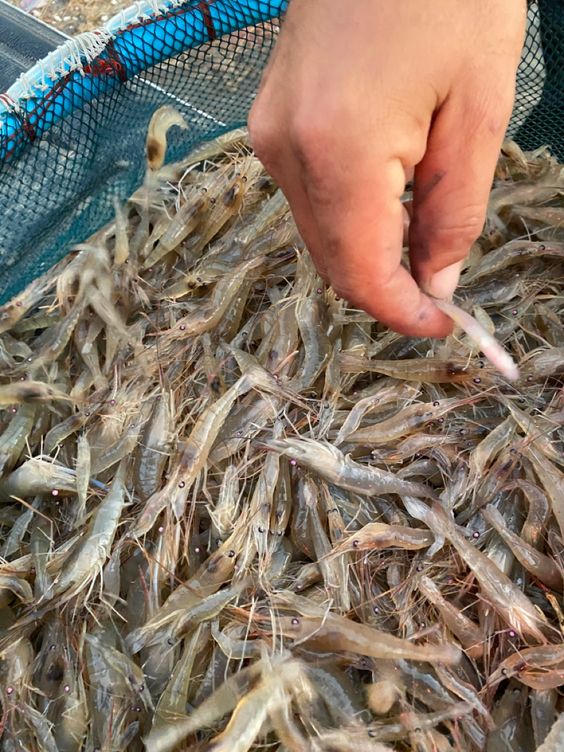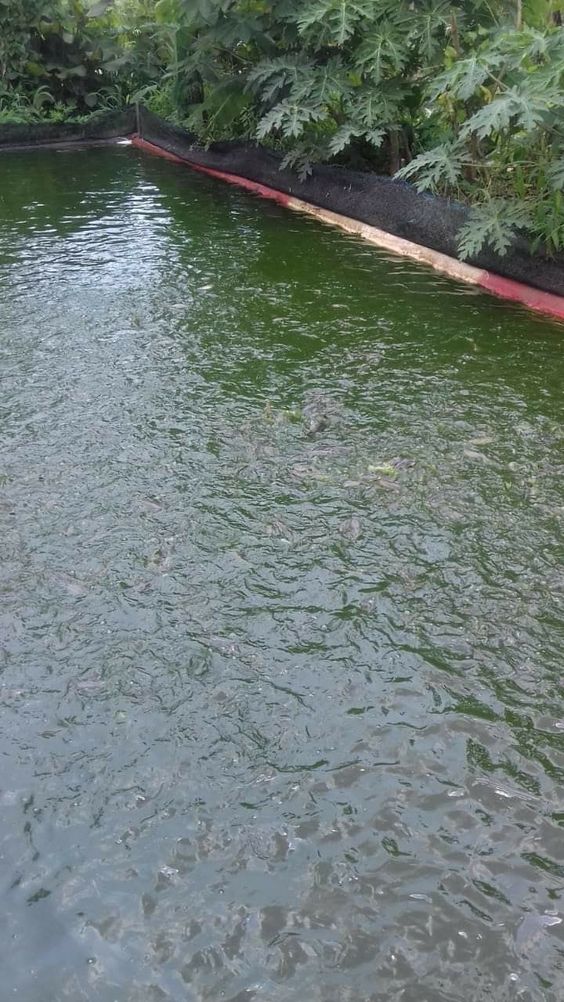Demystifying the Large Shrimp Pond Environment: A Comprehensive Guide
Large Shrimp Pond Environment,The global demand for shrimp continues to rise, driven by its delicious taste and versatility in various cuisines. To meet this growing demand, aquaculture, the practice of raising aquatic organisms in controlled environments, plays a crucial role. Large shrimp ponds are a prominent feature in this landscape, offering a means for large-scale, efficient shrimp production. This comprehensive guide delves into the intricacies of the large shrimp pond environment, exploring its benefits, objectives, management practices, and potential drawbacks.
Objectives of Large Shrimp Pond Management
The primary objective of managing a Large Shrimp Pond Environment is to create and maintain an optimal environment for shrimp growth and survival. This translates to achieving the following:
- Maintaining Healthy Water Quality: Water quality parameters like salinity, dissolved oxygen, pH, and ammonia levels need to be constantly monitored and adjusted to ensure a healthy environment for shrimp.
- Optimizing Feeding Practices: Providing the right type and quantity of feed at regular intervals is crucial for shrimp growth and development.
- Disease Prevention and Control: Implementing preventive measures like pond sanitation, water treatment, and proper stocking density helps minimize the risk of disease outbreaks.
- Maintaining Pond Productivity: Techniques like aeration and the introduction of beneficial bacteria can be employed to enhance the pond’s natural productivity, providing a healthy food source for the shrimp.
- Sustainable Management Practices: Responsible pond management emphasizes minimizing environmental impact by optimizing water usage, preventing pollution, and incorporating sustainable feed sources.
Factors Affecting Large Shrimp Pond Environment
Several factors influence the conditions within a Large Shrimp Pond Environment and require careful management. Here’s a closer look at some key elements:
-
Water Quality: As previously mentioned, water quality is paramount for shrimp health. This includes:
- Salinity: Large Shrimp Pond Environment thrive in brackish water with a salinity range typically between 15-30 parts per thousand (ppt). Maintaining this salinity level is crucial for proper physiological functioning of the shrimp.
- Dissolved Oxygen (DO): Adequate DO levels (around 5-8 mg/L) are vital for shrimp respiration. Techniques like aeration can be used to maintain sufficient oxygen levels.
- pH: The optimal pH range for shrimp ponds lies between 7.5 and 8.5. Regular monitoring and adjustments may be necessary to maintain this range.
- Ammonia Levels: Ammonia buildup from shrimp waste can be detrimental. Maintaining low ammonia levels through regular water exchange and biofiltration methods is essential.
- Temperature: Shrimp have specific temperature preferences depending on the species. Maintaining the desired temperature range through aeration or shade can be crucial.
-
Nutrient Management: Creating a balanced ecosystem within the pond is vital. Phytoplankton blooms, microscopic algae, serve as a natural food source for shrimp. Techniques like fertilization can be employed to promote healthy phytoplankton growth.
-
Disease Management: Disease outbreaks can devastate shrimp populations. Preventive measures include maintaining good water quality, avoiding overcrowding, and using disease-resistant shrimp species. Additionally, regular monitoring and early detection are crucial for implementing appropriate treatment plans.

Pond Management Practices
Several key practices contribute to successful Large Shrimp Pond Environment management. Let’s explore some:
- Preparation: Before stocking the pond, thorough preparation is essential. This involves pond cleaning and disinfection, adjusting salinity levels, and establishing a healthy plankton bloom.
- Stocking: Selecting healthy shrimp post-larvae (juvenile shrimp) and stocking them at the appropriate density are crucial factors. Overstocking can lead to competition for resources and disease outbreaks.
- Feeding: Providing the right type and quantity of feed throughout the growth cycle is vital. Formulated shrimp feed provides essential nutrients for optimal growth and development.
- Water Management: Regularly monitoring and maintaining water quality parameters like salinity, pH, and DO is essential. Techniques like water exchange, aeration, and biofiltration are often used for water management.
- Monitoring and Growth Tracking: Regularly monitoring shrimp growth through sampling and size measurement helps assess the effectiveness of management practices and identify any potential issues.
- Harvesting: When the shrimp reach market size, harvesting is conducted. Techniques like draining the pond or using seines (large nets) are employed for efficient harvesting.
Sustainable Large Shrimp Pond Environment Management
With the growing focus on environmental responsibility, sustainable practices in large shrimp pond management are gaining traction. Here are some key considerations:
- Minimizing Water Usage: Utilizing water-efficient technologies like drip irrigation for filling ponds and exploring alternative sources like treated wastewater can help reduce freshwater consumption.
- Responsible Feed Management: Utilizing sustainable feed sources like fishmeal alternatives and minimizing feed waste can reduce the environmental impact.
- Biofloc Technology: This emerging technique harnesses the natural breakdown of organic matter in the pond by beneficial bacteria, creating a secondary food source for shrimp and reducing the reliance on external feed sources.
- Mangrove Conservation: Mangrove ecosystems adjacent to shrimp ponds provide natural filtration and nursery grounds for juvenile fish that can benefit the pond ecosystem. Protecting and restoring these areas supports sustainable shrimp farming.
Challenges and Considerations in Managing Large Shrimp Pond Environments
Operating large shrimp ponds offers many benefits but also presents several challenges that require proactive management to ensure sustainable and profitable farming.
Disease Outbreaks: Disease outbreaks, such as viral and bacterial infections, can spread rapidly in high-density shrimp ponds, leading to substantial shrimp mortality and major financial losses for farmers. The concentration of shrimp in a single environment increases the risk of diseases spreading, making biosecurity measures essential. Preventive actions, like regular water quality testing, adequate filtration, and monitoring shrimp health, are vital. Additionally, having a contingency plan, including treatments or quarantine areas, helps to mitigate losses in case of an outbreak.
Environmental Impact: The environmental impact of large shrimp ponds can be significant if not properly managed. Poorly managed ponds can lead to pollution in surrounding water bodies due to high nutrient discharge, uneaten feed, and shrimp waste. This runoff can negatively impact local ecosystems, harming wildlife and affecting water quality. In some cases, mangrove forests are cleared to make room for ponds, leading to habitat loss and coastal erosion. Sustainable pond management practices, such as reducing nutrient discharge, implementing closed-loop systems, and avoiding mangrove destruction, are essential to protect the environment while maintaining productive shrimp farming.
Climate Change: Climate change introduces new challenges, especially for coastal shrimp ponds. Rising sea levels, fluctuating temperatures, and altered rainfall patterns can all affect pond salinity and water quality, disrupting shrimp growth. Extreme weather events, like storms and floods, can damage pond infrastructure and lead to sudden, unmanageable changes in water conditions. Adapting to climate change may involve using advanced monitoring systems, creating barriers to protect ponds from extreme weather, and selecting more resilient shrimp species that can withstand variable conditions. Preparing for climate impacts is crucial for the long-term sustainability of large shrimp pond environments.
Effective management of these challenges enables large shrimp ponds to continue meeting global demand while prioritizing environmental and economic stability.







